Local News
Mystery of why $725,000 donation to the Simkin Centre was made is likely solved
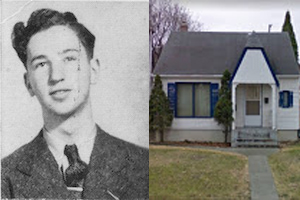
By BERNIE BELLAN
Readers of this website may recall our story posted a couple weeks ago in which we told about a $725,000 donation that was given to the Simkin Centre by something called the Myer and Corrine Geller Trust.
The donation – which was actually made out to the Sharon Home, was in the form of a $575,000 US cheque. It arrived in August of this year. The only information that the Simkin Centre had about the source of the cheque was that Myer Geller had graduated from St. John’s Tech in 1943, that he went to MIT, became a physicist, and that he was granted several patents.
With that scant information – and with the help of several other individuals, including several readers of this paper, especially Ed Feuer, and someone by the name of Christian Cassidy who read my story about the Gellers on our website and who went to extraordinary lengths to piece together the Geller family history on a blog known as “West End Dumplings”, we were able to amass quite a few details about Myer Geller and his family. Eventually we were led to the conclusion that Myer Geller’s mother, Sarah, must have been a resident of the Sharon Home until her death in 1984.
Based on information available on a variety of websites, including the Jewish Heritage Centre of Western Canada’s archives, Ancestry.ca, Truthfinder.com, Newspaper-archive.ca, and in the Winnipeg Henderson Directory of 1965, along with the St. John’s yearbook of 1943 (that was loaned to us by a reader who had it in his possession, but asked us not to reveal his name), along with information provided by Christian Cassidy, here is what we found:
Myer Geller was born in 1926 (which we reported in the Oct. 28 issue). His parents were Max and Sarah. Max Geller was born in 1887 and died in 1966. Sarah Geller (whose maiden name was Feldman) was born in 1893 and died in 1984. The Gellers were married in 1916 in Winnipeg.
The following is taken from Christian Cassidy’s blog, the “Western Dumpling”: “The earliest mention I can find of the Geller family comes in the 1921 Census of Canada. It shows Max Geller, 30, wife Sarah, 24, and eldest child, Rose, 3, renting a room at 689 Selkirk Avenue, the home of the Peck family.
“The census taker noted that the parents were Jewish and had emigrated from Russia, Sarah in 1912 and Max in 1913. Rose was born in Manitoba ca. 1918.
“Max’s profession is listed as a merchant of produce and eggs.”
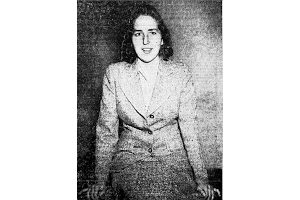
The blog also noted that Frances Geller was born in 1922.
At the time that Myer Geller would have gone to St. John’s Tech the Geller family lived at 284 Bannerman Avenue.
Again, according to Christian Cassidy, “Max Geller’s entry in the 1942 Henderson Directory lists him as a travelling salesman. From 1943 to 1945, he is a produce manager. No place of work is ever given.
“In 1946, Max gets into the fur industry as an employee of Elias Reich and Co. fur manufactures located on the 6th floor of the Jacob Crowley Building. He worked there and for its successor, J. H. Hecht, until 1948.
“In 1949 and 1950, Max’s occupation is listed as a “tracker” – no explanation of the job title or a place of work was given.”
Both Rose and Frances Geller married and lived in Toronto. Rose married someone named Louis Lieberman, while Frances married someone named Edward Jordan. We were not able to find any further references to either of the sisters once they left Winnipeg, although we did confirm that Louis Lieberman has died.
We did learn though that Myer Geller did have an illustrious career. Following his graduation from St. John’s Tech, he went to the University of Manitoba, then the University of Minnesota, where he obtained a master’s degree in physics. Evidently he returned to Manitoba for at least a short while because we were able to learn that he crossed into the United States in 1949, became an American citizen in 1950, then went to MIT from 1951-55, from where he obtained his PhD in physics.
Myer Geller married Corrine Taper in 1954 in New York. The Gellers lived at various times in New York, Pennsylvania, and finally California. As we also noted in our Oct. 28 story, Myer Geller’s name was associated with 15 different patents.
We learned that for at least a period of his life Myer Geller worked for a branch of the US Navy known as NOSC (Naval Operations Support Centre). With the help of a genealogist friend of former Winnipeggers Carol and Chuck Faiman we also learned this about Myer Geller: “in 1960 or 1961 he moved from a job at Hughes Products to be a senior scientist at the Solid State Division of Electro-Optical Systems in Pasadena, CA.”
In 1966 the Gellers moved to San Diego, which is where they lived until they both died, Myer in 2016, and Corrine in 2019. They did not have any children.
Here is the final information we were able to learn about Myer Geller’s parents:
Max and Sarah Geller eventually moved to a small apartment at 206 Perth Avenue, although whether they lived somewhere else after Bannerman is not clear. The 1965 Henderson Directory lists his occupation as a parking lot attendant. Max died in 1966 in St. Boniface Hospital.
Now, at this point what I’m writing is pure speculation: Sarah Geller likely remained in Winnipeg. When she died in 1984 she was buried in Rosh Pina Cemetery alongside her husband. Her children all lived in different cities – a situation which is quite familiar to so many of us. We cannot absolutely confirm that Mrs. Geller remained in Winnipeg, but here is what we speculate: A woman who would have been 73 when her husband died, and with no visible means of support, living in a very modest apartment, would likely have been dependent upon her children for support.
And where did individuals in that position usually end up? The evidence would seem to point to the Sharon Home, at 146 Magnus Avenue. Here we have an elderly widow with at least one of her children earning what must have been a very good income. (The Myer and Corrine Geller Trust eventually donated over $7 million Cdn, altogether, of which the donation to the Sharon Home/Simkin Centre was only 11% of the total amount donated.)
The likelihood is that Sarah Geller ended her days at the Sharon Home; hence the huge donation made to the Sharon Home.
Although we are told that the Simkin Centre did do a search in order to try to determine the basis for the donation they received from the Geller Trust, until now there would have been very scant information upon which an investigation could have proceeded.
We are not certain whether it will be possible to find records that would prove Sarah Geller was a resident there, but according to Shelly Faintuch, daughter of the late Dr. Henry Faintuch, who was executive director of the Sharon Home for many years, her father kept meticulous records of all residents in the home. If those records still exist, they should answer the question whether Sarah Geller did indeed live in the Sharon Home. In the meantime though, we are told the Simkin Centre is preoccupied with other matters, i.e., dealing with the COVID pandemic, and so it is quite understandable that any search for records that might show that Sarah Geller lived at the Sharon Home will have to be put off until the emergency situation has abated.
By no means do we want to indicate that the mystery is conclusively solved; we merely want to show that the trail of evidence which has emerged has led in a direction that could reasonably lead one to conclude why Myer Geller would have wanted to make such a large donation to the Sharon Home.
Local News
Winnipegger liver recipient Mark Kagan now in need of new kidney
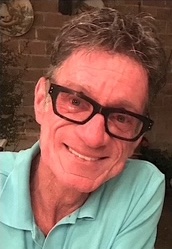
By MYRON LOVE About a year ago, Winnipegger Mark Kagan reached out to the Jewish community through the pages of the Jewish Post (and jewishpostandnews.ca) in his efforts to find a liver donor. At the time, his liver and his health were rapidly failing and he was quickly running out of time.
Back then, the former Best Western Hotels manager – who is in his mid-60s – reported that there is no cure for his condition (a non-alcohol related rare liver disease called Nodular Regenerative Hyperplasia).
“My only hope for survival is a liver transplant,” he said.
The good news is that he was able to get a liver transplant this past April in Toronto and his recovery went well. Within a short time, he was able to eat normally and resume exercising. He spent three weeks post-op in the hospital in Toronto and another two weeks at the Health Sciences Centre before being cleared to go home again.
The bad news was that once his liver failed, in turn, it caused his kidneys to fail. “My doctors originally hoped that my kidney function would return on its own once the liver was transplanted,” he notes.
That didn’t happen. Now Kagan has to have dialysis three times a week while trying to find a kidney donor.
On Tuesday, December 9, Kagan’s quest for a kidney donor will be the focus of a program at the Rady JCC hosted by Renewal Canada, a Toronto based organization that works within the Jewish community to find kidney donors and facilitate transplants. The event – that begins at 7:30 pm – is described as a Kidney Donation Awareness and Swab Drive with the hope that a donor can be found for Kagan. Speakers will include Rabbis Carnie and Kliel Rose – both discussing the mitzvah of organ donation, Penny Kravetsky representing Renewal Canada, and past donor Esther Dick, as well as Kagan.
Kagan adds a special thank you to Rebbitzen Bracha Altein for her role in directing his mother to Renewal Canada.
Comments that Kagan made last year in the Post article still ring true:
“Your support means everything to me and my family,” Kagan said. “Even if you cannot donate, sharing my story could connect me with someone who can. Thank you for taking the time to read and consider helping in this crucial time.”
Interested readers can register by going online at https://www.renewalcanada.org/
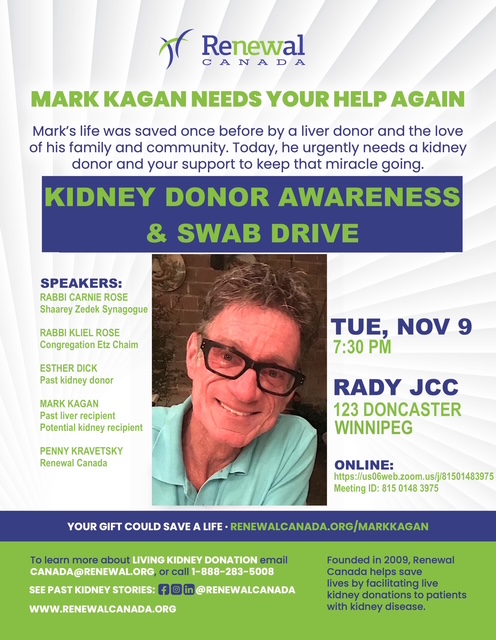
Local News
Manitoba trained Jewish physician now living in US laments state of medical care in Canada

By BERNIE BELLAN (Nov. 27, 2025) Introduction: We received a comment this morning from a former Winnipegger who had something to say about the state of medical care in Manitoba. Once you read her message you will be able to read an exchange of emails into which we entered that give more information about her:
I’m a physician who graduated from the University of Manitoba medical school (class of 1999). After training, I moved to Arizona to practice as a gastroenterologist. During my training in Winnipeg, I was always told how bad the American health care system was. I am here to tell you that this is incorrect. The poorest American who can’t afford health insurance and qualifies for state funded insurance has better health care than ALL of you.
I work in private practice. Yes, I’m busy. Yes, it takes many weeks to see me. However , if a family physician calls me and asks me to see a patient urgently, I will. If a patient needs a procedure urgently, I will get it done. If a patient needs to speak to me after my office hours or on weekends and holidays, I call them back. I am not the exception to the rule. I am practicing standard of care.
My niece has been in an out of the children’s emergency room (in Winnipeg) for several weeks because of kidney stones. She has been told numerous times by numerous physicians that her case is not “urgent”. Apparently, you can only get care if you become “urgent”. Urgent means that you are really sick and have developed complications. So, my niece has to end up in the ICU with sepsis (infection) and in renal failure for her to have the procedure she needs? What she was given was a prescription for morphine. Great, getting a teenager hooked on opiods as a way to treat kidney stones , that’s the answer? Her urologist told her mother (my sister) that the system is broken. Finally, an honest answer but in no way a solution.
The American health care system is not perfect but it’s significantly better than what you have. I’m appreciative of my excellent training I received in Winnipeg however, I could never work in your broken system as now I know better.
Good luck to you all.
Dr. Elisa Faybush
In response to Dr. Faybush’s comment, we sent her the following email:
Hi Dr. Faybush,
I read your message about the state of health care in Manitoba with great interest.
I wear 2 hats: I’m both an editor at the Jewish Post newspaper, also the publisher of a website called jewishpostandnews.ca
I would consider printing your message, but I’m curious: Is there a particular reason that you sent it to a Jewish publication?
For instance, are you Jewish yourself? It might put things into some sort of context which would explain why the letter was sent to us – or perhaps you sent the same message to other publications.
It would be helpful if you could elaborate on why you sent your message to us.
Regards,
Bernie Bellan
Dr. Faybush responded:
Hi Bernie
Yes I’m Jewish. Raised in garden city. My grand parents were Ann and Nathan Koslovsky
I sent the letter to the Winnipeg free press and was contacted for an interview but they wanted to interview my sister as well. Unfortunately my sister didn’t want to be interviewed.
I read your publication on line regularly to keep up with the Jewish community in Winnipeg.
My family still lives in Winnipeg and I was home this past summer for my niece’s graduation
I will always consider Winnipeg my home.
I’m so frustrated with the Canadian health care system and wanted the people from Winnipeg to know they deserve better.
Elisa Faybush
We wrote back:
Thanks for the speedy reply Elisa. I’ll add something to the end of your message about your roots.
And, for what it’s worth, I agree totally with you about the state of health care in Canada. It’s a sacred cow but this cow should be put out to pasture.
She responded:
100% agree
Feel free to call if you would like
(number redacted)
We wrote:
Well, if you’d like me to do a profile of you – which we do quite often of doctors who left Manitoba, usually written by Gerry Posner, I’d be glad to do that.
But it would be a full-on profile, not just a lament for the Canadian health care system. By the way, I searched your name in the History of Jewish Physicians in Manitoba, which was authored by Eva Wiseman a few years ago. I didn’t see your name in there, but one of the criteria for inclusion in that book was someone must have practised in Manitoba for at least 5 years after graduating. I assume you left before 5 years had elapsed. Is that right?
Elisa responded:
You are correct. I left after residency to complete my fellowship in gastroenterology in Arizona and never left.
I went to garden city collegiate graduated in 1991 and then went on to complete my bachelor of science at the u of w.
I’m not looking for a profile but thank you for the offer. I just need to express my opinion and I appreciate you giving me an outlet to do so.
We wrote:
When did you graduate from medical school?
Elisa responded:
1999
We wrote:
And did you go to Arizona immediately upon graduating?
Elisa responded:
After graduating u of m medical school in 1999 I completed my internal medicine residency at the u of m from 1999-2002. I then left to go to the university of Arizona in Tucson for my gi fellowship from 2002-2005. I then moved to Phoenix and started private practice. I just completed 20 yrs in practice this year.
We wrote:
ok great – I think it’s important to provide a fuller description of your career to lend some further significance to your original comment. By the way, you must have studied under Chuch Bernstein – right?
She responded:
Yes. He is the reason I did my fellowship in the USA. He encouraged me to do so. He probably thought I would come back to work in Winnipeg like he did!
We wrote:
He’s a great guy. I bet I know a lot of your schoolmates from med school. It’s too bad the Canadian medical system has alienated so many talented people. I still have lots of friends who were doctors and who still live here, but they’re all so embittered about our system.
Elisa responded:
I never practiced in Winnipeg but I hear about the problems with it as family members have to navigate through this broken system.
If I lived and practiced in Winnipeg I would know the doctors and specialists that I could call to help my family members but I’ve been gone for so long I don’t have any relationships with anyone anymore:
Local News
Simkin Centre shows accumulated deficit of $779,426 for year end March 31, 2025 – but most personal care homes in Winnipeg are struggling to fund daily operations
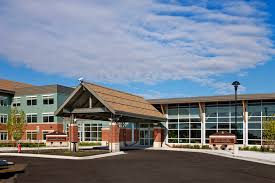
By BERNIE BELLAN The last (November 20) issue of the Jewish Post had as an insert a regular publication of the Simkin Centre called the “Simkin Star.”
Looking through the 16 pages of the Simkin Star I noticed that three full pages were devoted to financial information about the Simkin Centre, including the financial statement for the most recent fiscal year (which ended March 31, 2025). I was rather shocked to see that Simkin had posted a deficit of $406,974 in 2025, and this was on top of a deficit of $316,964 in 2024.
In the past month, I had also been looking at financial statements for the Simkin Centre going back to 2019. I had seen that Simkin had been running surpluses for four straight years – even through Covid.
But seeing the most recent deficit led me to wonder: Is the Simkin Centre’s situation unusual in its having run quite large deficits the past two years? I know that, in speaking with Laurie Cerqueti, CEO of the Simkin Centre, over the years, that she had often complained that not only Simkin, but many other personal care homes do not receive sufficient funding from the Winnipeg Regional Health Authority.
At the same time, an article I had read by Free Press Faith writer John Longhurst, and which was published in the August 5, 2025 issue of the Free Press had been sticking in my brain because what Longhurst wrote about the lack of funding increases by the WRHA for food costs in personal care homes deeply troubled me.
Titled “Driven by faith, frustrated by funding,” Longhurst looked at how three different faith-based personal care homes in Winnipeg have dealt with the ever increasing cost of food.
One sentence in that article really caught my attention, however, when Longhurst wrote that the “provincial government, through the Winnipeg Regional Health Authority, has not increased the amount of funding it provides for care-home residents in Manitoba since 2009.”
Really? I wondered. Is that true?
As a result, I began a quest to try and ascertain whether what Longhurst claimed was the case was actually the case.
For the purpose of this article, personal care homes will be referred to as PCHs.
During the course of my gathering material for this article I contacted a number of different individuals, including: Laurie Cerqueti, CEO of the Simkin Centre; the CEO of another personal care home who wished to remain anonymous; Gladys Hrabi, who wears many hats, among them CEO of Manitoba Association for Residential and Community Care Homes for Everyone ( MARCHE), the umbrella organization for 24 not-for-profit personal care homes in Manitoba; and a representative of the WRHA.
I also looked at financial statements for six different not-for-profit PCHs in Winnipeg. (Financial statements for some, but not all PCHs, are available to look at on the Province of Manitoba website. Some of those financial statements are for 2025 while others are for 2024. Still, looking at them together provides a good idea how comparable revenue and expenses are for different PCHs.)
How personal care homes are funded
In order to gain a better understanding of how personal care homes are funded it should be understood that the WRHA maintains supervision of 39 different personal care homes in Winnipeg, some of which are privately run but most of which are not-for-profit. The WRHA provides funding for all personal care homes at a rate of approximately 75% of all operational funding needs and there have been regular increases in funding over the years for certain aspects of operations (including wages, benefits, and maintenance of the homes) but, as shall be explained later, increases in funding for food have not been included in those increases.
The balance of funding for PCHs comes from residential fees (which are set by the provincial government and which are tied to income); occasional funding from the provincial government to “improve services, technology, and staffing within personal care homes,”; and funds that some PCHs are able to raise on their own through various means (such as the Simkin Centre Foundation).
But, in Longhurst’s article about personal care homes he noted that there are huge disparities in the levels of service provided among different homes.
He wrote: “Some of Winnipeg’s 37 personal-care homes provide food that is mass-produced in an off-site commercial kitchen, frozen and then reheated and served to residents.” (I should note that different sources use different figures for the number of PCHs in Winnipeg. Longhurst’s article uses the figure “37,” while the WRHA’s website says the number is “39.” My guess is that the difference is a result of three different homes operated together by the same organization under the name “Actionmarguerite.”)
How does the WRHA determine how much to fund each home?
So, if different homes provide quite different levels of service, how does the WRHA determine how much to fund each home?
For an answer, I turned to Gladys Hrabi of MARCHE, who gave me a fairly complicated explanation. According to Gladys, the “WRHA uses what’s called a global/median rate funding model. This means all PCHs—regardless of size, ownership, or actual costs—are funded at roughly the same daily rate per resident. For 2023/24, that rate (including the resident charge) was about $200+ (sorry I need to check with WRHA the actual rate) per resident day.”
But, if different residents pay different resident charges, wouldn’t that mean that if a home had a much larger number of residents who were paying the maximum residential rate (which is currently set at $37,000 per year) then that home would have much greater revenue? I wondered.
Laurie Cerqueti of the Simkin Centre provided me with an answer to that question. She wrote: “Residents at any pch pay a per diem based on income and then the government tops up to the set amount.” Thus, for the year ending March 31, 2025 residential fees brought in $5,150,657 for the Simkin Centre. That works out to approximately $27,000 per resident. I checked the financial statements for the five other PCHs in Winnipeg to which I referred earlier, and the revenue from residential fees was approximately the same per resident as what the Simkin Centre receives.
Despite large increases in funding by the WRHA for personal care homes in recent years, those increases have not gone toward food
I was still troubled by John Longhurst’s having written in his article that the “provincial government, through the Winnipeg Regional Health Authority, has not increased the amount of funding it provides for care-home residents in Manitoba since 2009.”
These days, when you perform a search on the internet, AI provides much more detailed answers to questions than what the old Google searches would.
Thus, when I asked the question: “How much funding does the WRHA provide for personal care homes in Winnipeg?” the answer was quite detailed – and specific:
“The WRHA’S total long-term care expenses for the fiscal year ended March 31, 2024 were approximately $632.05 million.” There are approximately 5,700 residents in personal care homes in Winnipeg. That figure of $632.05 million translates roughly into $111,000 per resident.
“The budget for the 2024-2025 fiscal year included a $224.3 million overall increase to the WRHA for salaries, benefits, and other expenditures, reflecting a general increase in health-care investments.” (But, note that there is no mention of an increase for food expenditures.)
But, it was as a result of an email exchange that I had with Simkin CEO Laurie Cerqueti that I understood where Longhurst’s claim that there has been no increase in funding for care-home residents since 2009 came from.
Laurie wrote: “…most, if not all of the pchs are running a deficit in the area of food due to the increases in food prices and the government/wrha not giving operational funding increases for over 15 years.” Thus, whatever increases the WRHA has been giving have been eaten up almost entirely by salary increases and some additional hiring that PCHs have been allowed to make.
Longhurst’s article focused entirely on food operations at PCHs – and how much inflation has made it so much more difficult for PCHs to continue to provide nutritious meals. He should have noted, however, that when he wrote there has been “no increase in funding for care home residents since 2009,” he was referring specifically to the area of food.
As Laurie Cerqueti noted in the same email where she observed that there has been no increase in operational funding, “approximately $300,000 of our deficit was due to food services. I do not have a specific number as far as how much of the deficit is a result of kosher food…So really this is not a kosher food issue as much is it is an inflation and funding issue.
“Our funding from the WRHA is not specific for food so I do not know how much extra they give us for kosher food. I believe years ago there was some extra funding added but it is mixed in our funding envelope and not separated out.”
So, while the WRHA has certainly increased funding for PCHs in Winnipeg, the rate of funding increases has not kept pace with the huge increases in the cost of food, especially between 2023-2024.
As Laurie Cerqueti noted, in response to an email in which I asked her how the Simkin Centre is coping with an accumulated deficit of $779,426, she wrote, in part: “The problem is that the government does not fund any of us in a way that has kept up with inflation or other cost of living increases. If this was a private industry, no one would do business with the government to lose money. I know some pchs are considering out (sic.) of the business.”
A comparison of six different personal care homes
But, when I took a careful look at the financial statements for each of the personal care homes whose financial statements I was able to download from the Province of Manitoba website, I was somewhat surprised to see the huge disparities in funding that the WRHA has allocated to different PCHs. (How I decided which PCHs to look at was simply based on whether or not I was able to download a particular PCH’s financial statement. In most cases no financial statements were available even to look at. I wonder why that is? They’re all publicly funded and all of them should be following the same requirements – wouldn’t you think?)
In addition to the Simkin Centre’s financial statement (which, as I explained, was in the Simkin Star), I was able to look at financial statements for the following personal care homes: West Park Manor, Golden West Centennial Lodge, Southeast Personal Care Home, Golden Links Lodge, and Bethania Mennonite Personal Care Home.
What I found were quite large disparities in funding levels by the WRHA among the six homes, either in 2025 (for homes that had recent financial statements available to look at) or 2024 (for homes which did not have recent financial statements to look at.)
Here is a table showing the levels of funding for six different personal care homes in Winnipeg. Although information was not available for all homes for the 2025 fiscal year, the figures here certainly show that, while the WRHA has been increasing funding for all homes – and in some cases by quite a bit, the rate of increases from one home to another has varied considerably. Further, the Simkin Centre received the lowest percentage increase from 2024 to 2025.
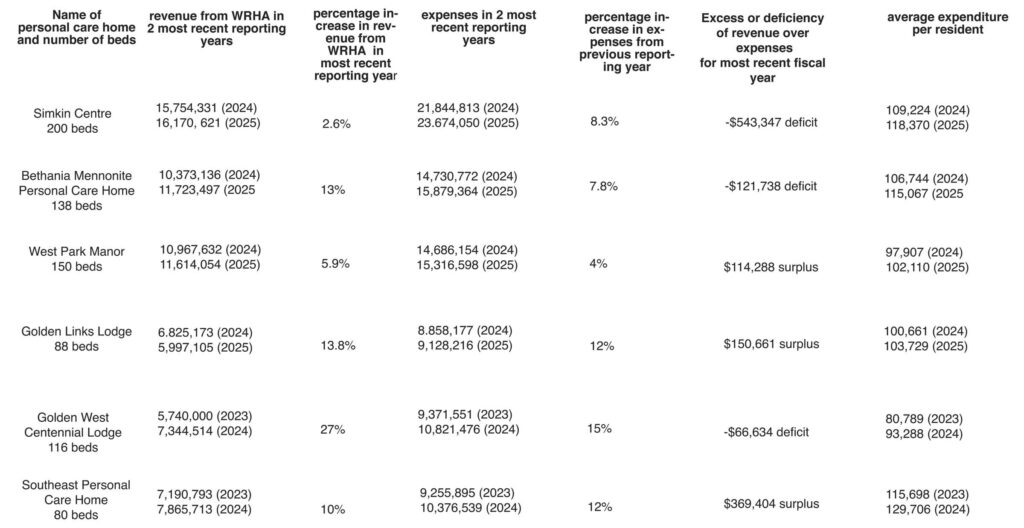
Comparison of funding by the WRHA for 6 different personal care homes
We did not enter into this project with any preconceived notions in mind. We simply wanted to investigate how much funding there has been from the WRHA for personal care homes in Winnipeg in recent years.
As to why some PCHs received quite large increases in funding, while others received much smaller increases – the WRHA response to my asking that question was this: “Due to the nature and complexity of the questions you are asking regarding financial information about PCHs, please collate all of your specific questions into a FIPPA and we can assess the amount of time needed to appropriately respond.”
Gladys Hrabi of MARCHE, however, offered this explanation for the relatively large disparities in funding levels among different PCHs: “Because funding is based on the median, not actual costs, each PCH must manage within the same per diem rate even though their realities differ. Factors like building age, staffing structure, kitchen setup, and resident complexity all influence spending patterns.
“The difference you found (in spending between two particular homes that I cited in an email to Gladys) likely reflects these operational differences. Homes that prepare food on-site, accommodate specialized diets (cultural i.e. kosher), or prioritize enhanced dining experiences (more than 2 choices) naturally incur higher total costs. Others may use centralized food services or have less flexibility because of budget constraints.
“The current model doesn’t adjust for inflation, collective agreements, or true cost increases. This means many homes, especially MARCHE members face operating deficits and have to make tough choices about where to contain costs, often affecting areas like food, recreation, or maintenance. The large differences you see in food spending aren’t about efficiency —–they’re a sign that the current funding model doesn’t reflect the true costs of care.”
But some of the disparities in funding of different personal care homes really jump off the page. I noted, for instance, that of the six PCHs whose financial statements I examined, the levels of funding from WRHA for the 2024 fiscal year fell between a range of $63,341 per resident (at Golden Links Lodge) to $78,771 at the Simkin Centre – but there was one particular outlier: Southeast Personal Care Home, which received funding from the WRHA in 2024 at the rate of $98,321 per resident. Not only did Southeast Personal Care Home receive a great deal more funding per resident than the other five PCHs I looked at, it had a hefty surplus to boot.
I asked a spokesperson from the WRHA to explain how one PCH could have received so much more funding per capita than other PCHs, but have not received a response.
This brings me then to the issue of the Simkin Centre and the quite large deficit situation it’s in. Since readers might have a greater interest in the situation as it exists at the Simkin Centre as opposed to other personal care homes and, as the Simkin Centre has reported quite large deficits for both 2024 and 2025, as I noted previously, I asked Laurie Cerqueti how Simkin will be dealing with its accumulated deficit (which now stands at $779,426) going forward?
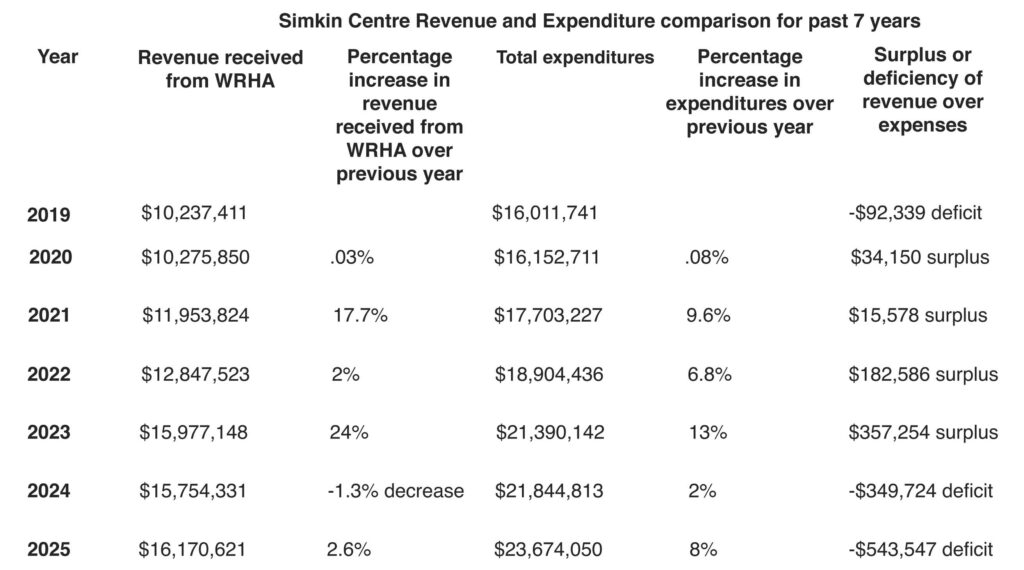
Now, as many readers may also know, I’ve been harping on the extra high costs incurred by Simkin as a result of its having to remain a kosher facility. It’s not my intention to open old wounds, but I was somewhat astonished to see how much larger the Simkin Centre’s deficit is than any other PCH for which I could find financial information.
From time to time I’ve asked Laurie how many of Simkin’s 200 residents are Jewish?
On November 10, she responded that “55% of residents” at Simkin are Jewish. That figure is consistent with past numbers that Laurie has cited over the years.
And, while Laurie claims that she does not know exactly how much more the Simkin Centre pays for kosher food, the increases in costs for kosher beef and chicken have outstripped the increases in costs for nonkosher beef and chicken. Here is what we found when we looked at the differences in prices between kosher and nonkosher beef and chicken: “Based on recent data and long-standing market factors, kosher beef and chicken prices have generally gone up more than non-kosher (conventional beef and chicken). Both types of meat have experienced significant inflation due to broader economic pressures and supply chain issues, but the kosher market has additional, unique cost drivers that amplify these increases.”
In the final analysis, while the WRHA has been providing fairly large increases in funding to personal care homes in Winnipeg, those increases have been eaten up by higher payroll costs and the costs of simply maintaining what is very often aging infrastructure. If the WRHA does not provide any increases for food costs, personal care homes will continue to be squeezed financially. They can either reduce the quality of food they offer residents or find other areas, such as programming, where they might be able to make cuts.
But, the situation at the Simkin Centre, which is running a much larger accumulated deficit than any other personal care home for which we could find financial information, places it in a very difficult position. How the Simkin Centre will deal with that deficit is a huge challenge. The only body that can provide help in a major way, not only for the Simkin Centre, but for all personal care homes within Manitoba, is the provincial government. Perhaps if you’re reading this you might want to contact your local MLA and voice your concerns about the lack of increased funding for food at PCHs.


